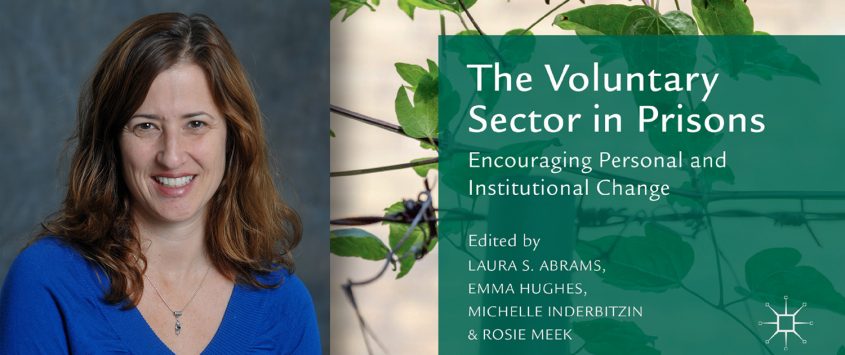The Intersection of Social Welfare and Criminology New book co-edited by UCLA Luskin professor Laura Abrams gives a voice to volunteers, including prisoners, who donate their time to improving lives, changing the system and giving back to their communities
By Stan Paul
James Anderson has earned three college degrees, all of them in the Oregon State Penitentiary where he has been since he was 17. Also there is Joshua Cain, currently working toward his bachelor’s degree. And Trevor Walraven, like Anderson and Cain, is a longtime volunteer in prisoner empowerment programs. Now in their 30s, these members of the “Lifers Unlimited Club” at Oregon State Penitentiary are well into their second decade of incarceration, serving life sentences for crimes they committed as young men.
All three are contributors to a new book co-edited by UCLA Luskin School of Public Affairs social welfare professor Laura Abrams and her colleagues from the United States and the United Kingdom. The prisoners’ voices are included in “The Voluntary Sector in Prisons: Encouraging Personal and Institutional Change,” published this month as part of the Palgrave Studies in Prisons and Penology series.
The book is a collection of scholarly articles looking at various dimensions of the voluntary sector’s influence on prison life. It includes analyses and examples of people who volunteer their time to help within the prison walls and in the larger community. It also examines the importance of the voluntary sector in reshaping the role of prisons and the services they provide as it relates to prison overcrowding and mass incarceration policies.
“We believe that the global and multi-authored nature of this collection, including two chapters co-authored with currently incarcerated men, is one of its unique strengths,” Abrams said. “To our knowledge, this is one of the few scholarly collections to consider the perspectives of prisoners themselves as volunteers, organizers and community change leaders.”
Citing research by Luskin colleague Michael Stoll and UC Berkeley co-author Stephen Raphael, Abrams noted that “currently there is increasing public and bipartisan governmental recognition in the USA that the war-on-drug policies have largely failed to halt crime or create a climate of public safety.” In addition, Abrams said that over the past several decades correctional facilities in the U.S. have become increasingly punitive and less rehabilitative — a trend that volunteers have always contested.
“As such, we are witnessing a significant shift toward beliefs long held in other nations — particularly in Western European and Scandinavian countries — that incarcerated people need education, skills and other forms of rehabilitation in order to succeed upon their release, and that humane treatment of prisoners may contribute to a more peaceful society as a whole,” she said.
The book is the result of a 2014 conference of doctoral students and faculty convened by one of the co-editors and contributors, Rosie Meek, chair of the School of Law at University of London Royal Holloway. “This relates to my research because so many correctional treatment and reentry programs are staffed and run by nonprofit organizations and volunteers. This book pulls together a study of social welfare systems with criminology — my two areas of scholarship,” Abrams said.
Chapters of the new book address the importance of community volunteers and nonprofit organizations in providing rehabilitative programming in prisons and jails, as well as what citizenship and democracy mean even in the prison environment. Other chapters focus on how prisoners, as volunteers, mentors and leaders, can contribute to their communities and the value and effectiveness of peer support in prison.
“I think most people wouldn’t know that prisoners themselves volunteer to help each other, and to help the community at large,” Abrams said. “This is really groundbreaking knowledge to include this material and their authorship.”




I think this book is interesting for everybody who has to do with criminology